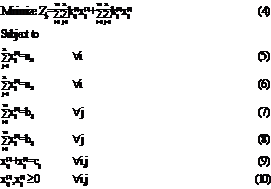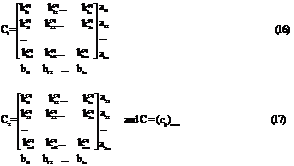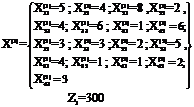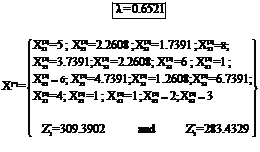 |
||||||
|
|
Home| Journals | Statistics Online Expert | About Us | Contact Us | |||||
 |
||||||
| About this Journal | Table of Contents | ||||||
|
|
[Abstract]
[PDF]
[HTML]
[Linked
References] Optimization Fuzzy Multi-Objective Multi-Index Transportation Problem with Linear Membership Function M. H. Lohgaonkar Dept. of Statistics, Shri Chhatrapati Shivaji Mahavidyalaya, Shrigonda, Ahmadnagar, Maharashtra, INDIA. Corresponding Address: Research Article
Abstract: Fuzzy programming technique is used to solve multi-objective multi-index transportation problem in which objectives are conflicting in nature. The fuzzy programming method has been applied to find optimal compromise solution with the help of numerical example. Keywords: multi-Objective transportation problem, multi-Index transportation problem fuzzy linear membership function.
1. Introduction Fuzzy set theory was proposed by L. A. Zadeh (1965), and has been found extensive in various fields. Bellman and Zadeh (1970) were the first to consider the application of the fuzzy set theory in solving optimization problems in a fuzzy environment, these investigators constraints that both the objective function and the constraints that exist in the model could be represented by corresponding fuzzy set and should be treated in the same manner. The earliest application of it to transportation problems include Prade (1980), O’he’igeartaigh (1982), Chanas et al. (1984),Vedegay (1984) and Delgado et al. (1987). But these researcher emphases on investigating theory and algorithm. Furthermore, these above investigations are illustrated with simple instance slacking in actual cases of submission. On the other hand, these models are only of single objective and are classical two index transportation problems. In actual transportation problem, the multi-objective functions are generally considered, which includes average delivery time of the commodities, minimum cost, etc. The first attempt to fuzzify a linear programming with multiple objective functions was made by Zeleny (1973). Zimmermann (1978) applied the fuzzy set theory to the linear multicriteria decision making problem. It used the linear fuzzy membership function and presented the application of fuzzy linear vector maximum problem. He showed that solutions obtained by fuzzy linear programming always provide efficient solutions and also an optimal compromised solution. Aneja and Nair (1988) Showed that the problem model and Klingman and Phillips (1988) developed a model / solution procedure for adjusting to obtain an equitably infeasible solution for an infeasible solution for an infeasible transportation problem. Kligman and Phillips (1988) showed that the problem can be modeled and solved as a preemptive, multicritera, and capacitated transportation problem. Multi-index transportation problem are the extension of conventional transportation problems, and are appropriate for solving transportation problems with multiple supply points, multiple demand points as well as problems using diverse modes of transportation demand or delivering different kinds of merchandises. Thus, the forwarded problem would be more complicated than conventional transportation problems. Junginger (1993) who proposed a set of logic problems, to solve multi-index transportation problems, has also conducted a detailed investigation regarding the characteristics of multi-index transportation problem model. Rautman et al. (1993) used multi-index transportation problem model to solve the shipping scheduling suggested that the employment of such transportation efficiency but also optimize the integral system. These references are only a single objective model and its constraints are not fuzzy numbers. In this study, a model is developed, and it combines fuzzy multi-objective programming and multi-index transportation problem to solve problem. This model cannot only satisfy more of the actual requirements of the integral system but is also more flexible than conventional transportation problems. Furthermore, it can offer more information to the decision maker (DM) for reference, and then it can raise the quality for decision-making. The fuzzy multi-objective multi-index transportation problem model is presented.
2. Mathematical Model Multi-Objective Multi-index Transportation Problem Let
Subject to
It is immediate that
are three necessary conditions however they are noted to be non sufficient. Multi-objective double transportation problem as follows
It may be easily seen that for existence of solution following set of conditions are necessary.
It may be easily seen that DTP is composed of two transportation tables and one C matrix as given below.
3. Fuzzy Algorithm to solve multi-objective multi-index transportation problem Step 1:Solve the multi-objective multi-index transportation problem as a single objective transportation problem P times by taking one of the objectives at a timeStep 2 : From the results of step 1, determine the corresponding values for every objective at each solution derived. According to each solution and value for every objective, we can find pay-off matrix as follows
Where, Step 3:From step 2, we find for each objective the worst (Up) and the best (Lp)values corresponding to the set of solutions, where,
An initial fuzzy model of the problem
|
|||||
|
||||||





















